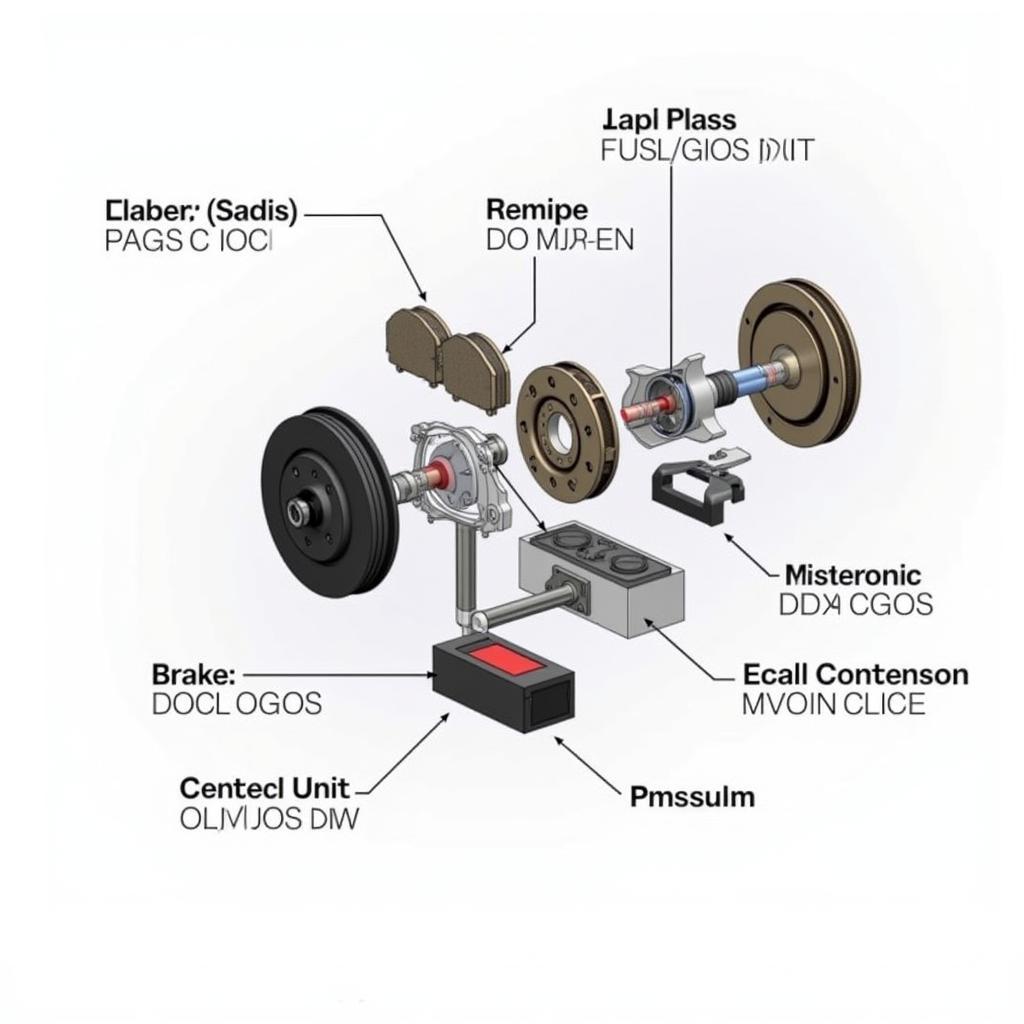The brake pad warning light illuminating on your Range Rover Sport dashboard can be an unwelcome sight. This amber or red light, often accompanied by a warning message, signifies a potential issue with your braking system that shouldn’t be ignored. This article will guide you through the common causes of this warning light and provide insights on how to address them, ensuring your Range Rover Sport stays safe and performs at its best.
Understanding Your Range Rover Sport’s Braking System
Your Range Rover Sport utilizes a sophisticated electronic braking system that goes beyond traditional hydraulics. It incorporates various components like:
- Electronic Brake-force Distribution (EBD): Optimizes braking force to each wheel for maximum stability.
- Emergency Brake Assist (EBA): Automatically increases braking pressure in emergency situations.
- Anti-lock Braking System (ABS): Prevents wheel lock-up during hard braking, maintaining steering control.
These interconnected systems rely on sensors, including those monitoring brake pad wear. When the brake pad warning light appears, it’s often a signal from these sensors, indicating potential issues that require attention.
 Range Rover Sport Brake System Components
Range Rover Sport Brake System Components
Common Causes of the Brake Pad Warning Light
While worn brake pads are the most common culprit, several other factors can trigger the warning light in your Range Rover Sport:
- Worn Brake Pads: As brake pads wear down, the sensor embedded within them comes into contact with the brake rotor, triggering the warning light.
- Faulty Brake Pad Sensor: A malfunctioning or damaged brake pad sensor can send a false signal, illuminating the warning light even if the brake pads are in good condition.
- Low Brake Fluid: Insufficient brake fluid level can trigger the brake pad warning light, often accompanied by a separate warning light. Low fluid levels may indicate a leak in the braking system.
- Issues with the ABS System: A problem within the ABS system, such as a faulty wheel speed sensor, can sometimes trigger the brake pad warning light.
Diagnosing the Problem
Accurately diagnosing the root cause of the brake pad warning light is crucial for effective repair. While visual inspection of the brake pads can be helpful, it’s recommended to:
- Consult your Range Rover Sport owner’s manual: The manual often outlines specific warning light meanings and recommended actions.
- Utilize an OBD-II Scanner: This device plugs into your vehicle’s diagnostic port and retrieves fault codes, providing more specific information about the issue.
- Seek Professional Diagnosis: If unsure, a qualified mechanic specializing in Range Rover vehicles can accurately diagnose the problem using specialized equipment and expertise.
 Mechanic Inspecting Range Rover Sport Brake Pads
Mechanic Inspecting Range Rover Sport Brake Pads
Addressing the Brake Pad Warning Light
The solution to a brake pad warning light depends entirely on the underlying cause. Here are the most common solutions:
- Brake Pad Replacement: If inspection reveals worn brake pads, replacement is necessary. It’s recommended to replace all four brake pads simultaneously, ensuring even braking performance.
- Brake Pad Sensor Replacement: If the sensor is faulty, it needs replacement. This is often done concurrently with brake pad replacement.
- Brake Fluid Top-up or System Inspection: If low brake fluid triggers the warning, top up the fluid to the recommended level. If the level remains consistently low, a leak inspection is crucial.
- Professional Repair for ABS or Electronic Issues: For issues stemming from the ABS system or other electronic components, seeking professional repair from a qualified mechanic is recommended.
2008 range rover sport supercharged red brake light warning
Ignoring the Warning Light: The Risks
Ignoring a persistent brake pad warning light can lead to serious consequences:
- Reduced Braking Efficiency: Worn brake pads significantly reduce braking efficiency, increasing stopping distances and the risk of accidents.
- Damage to Brake Rotors: Driving with severely worn brake pads can damage the brake rotors, leading to costly repairs.
- Complete Brake Failure: In extreme cases, ignoring the warning light can lead to complete brake failure, putting you and others at significant risk.
Maintaining Your Range Rover Sport’s Brakes
Proactive maintenance is key to preventing brake issues and ensuring optimal performance:
- Regular Brake Inspections: Schedule routine brake inspections with a qualified mechanic, ideally every 12,000 miles or as recommended in your owner’s manual.
- Quality Brake Pads: When replacing brake pads, opt for high-quality parts specifically designed for your Range Rover Sport model.
- Mindful Driving Habits: Avoid aggressive driving habits like hard braking and rapid acceleration, which can accelerate brake pad wear.
Conclusion
The brake pad warning light on your Range Rover Sport is a crucial safety indicator. By understanding its potential causes and taking appropriate action, you can ensure your vehicle’s braking system remains in top condition, providing you with the safety and performance you expect from a Range Rover.

